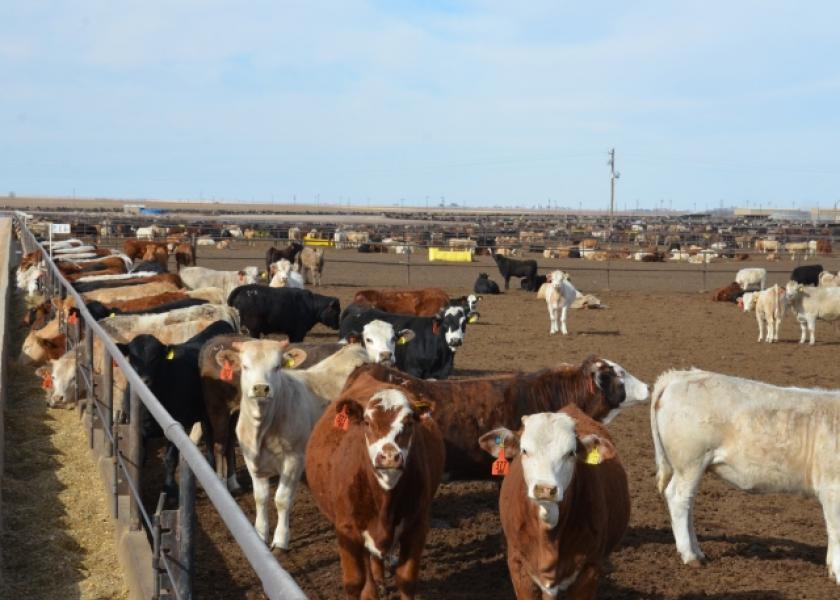Derrell Peel: Regional Cattle On Feed Breakdown

USDA's cattle on feed report shows feedlot inventories totaled 11.928 million head on February 1, up 2.2 percent year-over-year and the highest total for the month since 2008. January marketings were 101.1 percent of last year, close to pre-report expectations. Placements in January were 99.4 percent of one year ago. The placement number was smaller than expected and will be viewed as somewhat bullish.
January placements consisted of 2.4 percent more cattle weighing less than 700 pounds compared to last year, offset by a year-over-year 2.8 percent decrease in placements weighing more than 700 pounds. However, over the past five months, placements of heavy cattle have been substantially larger than lightweight cattle.
Since September, placements of cattle weighing more than 700 pounds are up 5.9 percent year-over-year compared to a 2.7 percent year-over-year increase in lightweight placements. In fact, placements of cattle weighing 900-999 pounds are up 7.6 percent over the five months and placements over 1000 pounds are up 8.5 percent compared to last year.
Regional differences are pronounced. Texas has the largest on-feed inventory by a substantial margin with 2.94 million head in feedlots compared to number two Nebraska at 2.48 million head. Placements increased 4.7 percent year-over-year in Texas in the past five months but the majority are cattle under 700 pounds, up 10.3 percent compared to over 700 pound placements, down 4.7 percent year-over-year since September.
Nebraska has placed 3.1 percent more cattle since September compared to the same period one year ago. However, Nebraska placements consisted of a 6.9 percent year-over-year increase in cattle over 700 pounds, compared to last year and a 3.7 percent year-over-year decrease in placements under 700 pounds over the five month period.
Number three Kansas, has placed 7.4 percent more cattle year-over-year since September with a more balanced spread across weights. Kansas placements of cattle weighing over 700 pounds has been up 8.2 percent year-over-year with those under 700 pounds up 6.0 percent compared to the same period last year. In number four cattle feeding state Colorado, the 9.8 percent year-over-year increase in placements the last five months is made up entirely of cattle over 700 pounds, up 17.5 percent with placements of lightweight cattle unchanged from last year.
Overall, cattle feeding currently is shifted to the western and southern plains with year-over-year increases in feedlot inventories in Texas (106.9 percent of last year), Oklahoma (103.2 percent), Kansas (106.7 percent) and Colorado (105.8 percent). Feedlot inventories are smaller year-over-year in Nebraska (96.1 percent of last year), Iowa (97.1 percent) and South Dakota (94.1 percent). Despite this, a bigger proportion of the heavy placements that will be marketed in the next three or four months are in Nebraska, Kansas and Colorado compared to Texas, relative to one year ago. However, this same region has recently experienced, and is most susceptible to, winter weather that may delay and spread out marketings in the coming weeks.
Related stories:
Cash Fed Cattle Higher, COF Data Friendly
Nalivka: Reviewing Carcass Weights







